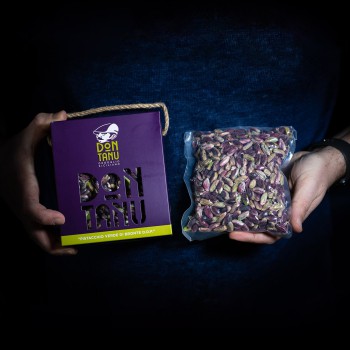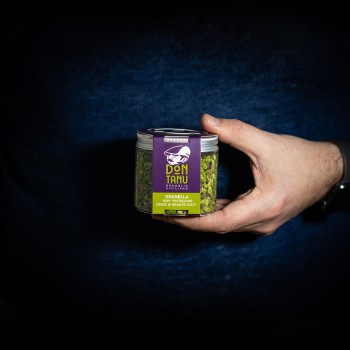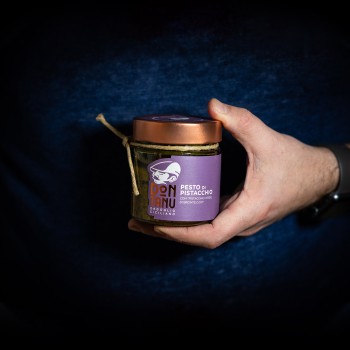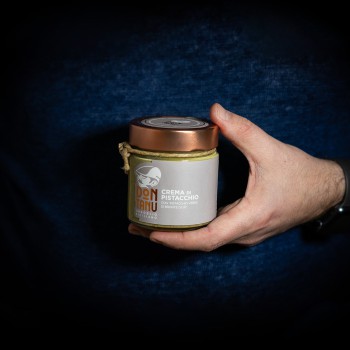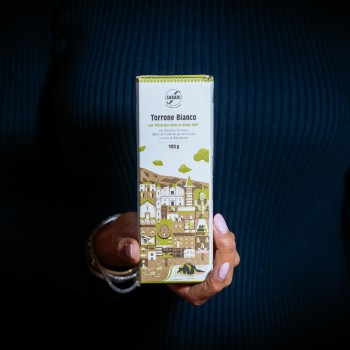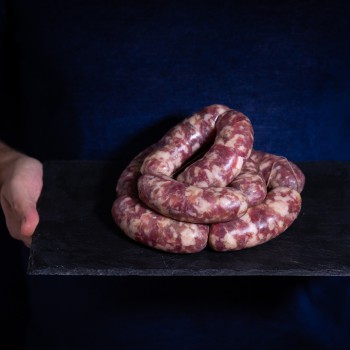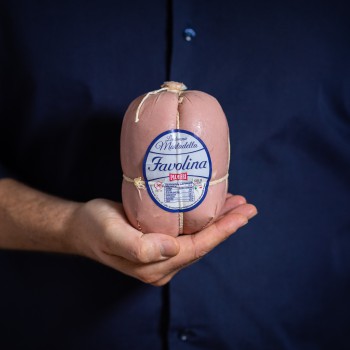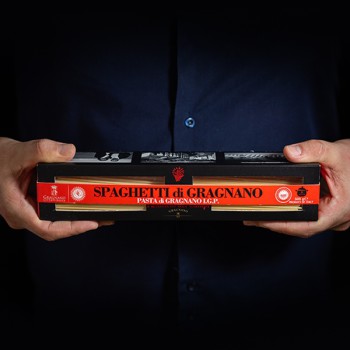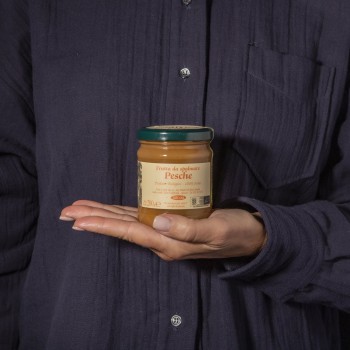- Meat & Seafood add remove
- Cured meats & Cheeses add remove
- Pasta & Pizza add remove
- Preserves & Condiments add remove
-

- Pickles & Preserves add remove
-
- Truffles, legumes & mushrooms add remove
- Desserts & snacks add remove
- Organic
- Tasting Selections
- Christmas
- Regali aziendali
- Brands
- Meat & Seafood add remove
- Cured meats & Cheeses add remove
- Pasta & Pizza add remove
- Preserves & Condiments add remove
-

- Pickles & Preserves add remove
-
- Truffles, legumes & mushrooms add remove
- Desserts & snacks add remove
- Organic
- Tasting Selections
- Christmas
- Regali aziendali
- Brands
PDO Bronte pistachios
PDO Bronte pistachios: the Sicilian emerald
The pistachio tree is very old. It was already mentioned in the Old Testament and the drawing of a pistachio plant was found on an Assyrian obelisk dating back to the 7th century BC. The word pistachio comes from the Greek Pistakion which was then translated as Pistacium in Latin. But it was the Arabs that spread the pistachio all over Sicily.
As a matter of fact, people from Sicily do not call it Pistacchio, but they use the word Fastuca which comes from the Arab word Fastuq. The pistachio tree likes dry and rough terrain and the volcanic soil, fertilised by volcanic dusts, on the foothills of Etna is its ideal place. The pistachio tree is very sturdy and can live up to 300 years. It likes to take its time before bearing fruits; the first harvest usually takes place only a decade after the graft. But it’s worth the wait, because Bronte pistachios have a truly unique flavour.
Shelled PDO Bronte Pistachios - 250g


The brands we selected
Did you know that the real green pistachio of Bronte, which obtained the PDO label, is one of the most counterfeited products in the world?
And that the harvest only takes place on uneven years? And that the pistachio plant starts bearing fruits at least 10 years after grafting? To sum it up, cultivating Bronte pistachios is neither easy nor particularly profitable.
Moreover, pistachios like to grow on volcanic soil which is not accessible to agricultural machines. Harvesters still de-stem fruits by hand, paying close attention not to drop anything in drops and steep terrains.
Truth be told, at harvest time pistachios are not emerald green, at all. Prior to the removal of the hull, drying and shelling, pistachios kind of look like white grapes. However, at the end of the process, they take on that signature bright green colour.
The pistachio tree is very old. It was already mentioned in the Old Testament and the drawing of a pistachio plant was found on an Assyrian obelisk dating back to the 7th century BC. The word pistachio comes from the Greek Pistakion which was then translated as Pistacium in Latin. But it was the Arabs that spread the pistachio all over Sicily.
As a matter of fact, people from Sicily do not call it Pistacchio, but they use the word Fastuca which comes from the Arab word Fastuq. The pistachio tree likes dry and rough terrain and the volcanic soil, fertilised by volcanic dusts, on the foothills of Etna is its ideal place. The pistachio tree is very sturdy and can live up to 300 years. It likes to take its time before bearing fruits; the first harvest usually takes place only a decade after the graft. But it’s worth the wait, because Bronte pistachios have a truly unique flavour.
From plant to packaging
The harvest takes place every two years only on uneven years. It is carried out from the end of August until the beginning of September, under the intense Sicilian sun. It is a lot of hard work, but I bet that no-one in Bronte would want to abandon this ritual which has been passing down from generation to generation. It is an occasion to celebrate this local delicacy.
Moreover, as previously mentioned, pistachios like to grow in uncomfortable places and the volcanic soil is not accessible to agricultural machines, so the harvest has to be carried out by hand. Harvesters de-stem fruits which fall in a basket that they carry over their shoulder. Harvesters must be very careful not to drop anything, since it is impossible to get pistachios back, once they have fallen in drops and steep terrains.
How do pistachios look like, when they are still attached to the plant? They look completely different, like white grapes. The wood-like shell and the green parts are not visible, but they are there; they are covered by the hull which forms when the pistachio is ripe enough.
The second step consists in the removal of the hull. Once it’s removed, you will see the shelled pistachio. It’s time to let them dry: pistachios are laid on nets and left to dry for two or three days. This step, which is called stendituri in Sicilian dialect, is extremely important, since it allows airing pistachios out in a uniform way, until they are dried enough. It is a traditional, slow and natural method to which the Sicilian heat contributes.
Then the shelling takes place; this is the step that has been automated the most and looks very different from the old method. Automated machines remove the wood-like shell, while in the past this step used to be carried out by hand. Farmers used to stand in a circle around the ‘u sciffu, a concave volcanic stone, and used to shell pistachios one by one. Once the pistachio has been shelled, it is still enveloped by a thin purplish skin which is sometimes peeled off.
Before being packed, there is one last step: fibre optic machines select the fruits to be put on the market, but qualified employees have the last word; they carry out the final check and send the products to packaging companies.
Bronte Pistachio: PDO and Consortium
Bronte pistachio obtained the Protected Designation of Origin in June 2009. Every production step - from the harvest to marketing - must meet product specification requirements. This pistachio type can only be cultivated and processed in the following geographical municipalities: Bronte, Adrano and Biancavilla.
The path to earn this certification was long and arduous and it took almost 10 years. In 2001 a group of farmers decided to request the PDO certification, but it was only in 2004 that the Ministry for Alimentary, Agricultural and Forester Policies (MIPAAF) granted this pistachio a “temporary protection”.
Product specifications detail how the label should look like: apart from the wordings “green Bronte Pistachio” and “Protected Designation of Origin”, there must be the MIPAAF’s symbol, the drawing of a pistachio and of the Etna and the name of the three municipalities.
The Consortium, which has been officially recognised by the MIPAAF, was founded in 2004, with the aim of protecting, safeguarding and promoting Bronte pistachios. The consortium checks whether the “PDO green Bronte pistachio” label is not being misused and also defends it in court. As a matter of fact, Bronte pistachio is one of the most counterfeited products in the world and many countries pass off their pistachios as Sicilian pistachios.
Italy only produces 1% of the world’s pistachios, but they are the most delicious ones. The wording “Bronte pistachio” is often found on ice creams, creams, pestos and chopped pistachios. We clearly suspect some irregularities and even if it’s obvious that the flashy green ice-cream does NOT contain PDO Bronte pistachios, it is sometimes more difficult to discern whether a product is authentic or not.
The real Bronte pistachio has a long shape and is very, very green. If you stumble upon round or yellowish pistachios, do not buy them because they are not the real ones. They may come from Bronte, but that doesn’t say anything about their quality. Check whether they have the label “PDO green Bronte pistachio” with the MIPAAF’s logo; that’s the only seal of guarantee.
Bronte pistachio in recipes
Pistachios are very trendy right now, but we all know that there are different kinds of pistachios out there. The real Bronte pistachio can be used in many recipes, both sweet and savoury. In the Arab world, many cakes list pistachios as their ingredient and the same thing happens in Sicily.
Hacked pistachios can decorate cannoli and finely hacked pistachios can be used to make crumbly biscuits, like almond biscuits. They taste amazing also in ice creams and creams, as well as in brittles and nougats. Bronte pistachio can be used in savoury recipes, such as pesto, or to coat meat and fish; for instance, it is exceptional with tuna for a 100% Sicilian dish.
Whole PDO Bronte pistachios
By combining the traditional confectionery of Tuscany with these Sicilian emeralds, we get Cantucci biscuits with Bronte pistachios. All you need to do is replace almonds with pistachios and that’s it. I must say that Cantucci biscuits look even prettier with those green gems scattered around the biscuit dough.
If you are looking for a savoury recipe, I recommend making plum cake with pistachios and Mortadella cold cut. To get a very fluffy dough, add 100g of Ricotta cheese for every 300g of flour. Then with these ingredient measurements, add 1 sachet of yeast powder, 80ml of milk, 3 eggs and 100ml of olive oil.
It is very easy to make: mix the flour and yeast in one bowl, and the milk, oil and eggs in another bowl. Join the two mixtures little by little, mix well and add the Ricotta cheese, diced Mortadella and Bronte pistachios. Bake at 180° for 40 minutes and the plum cake is ready! If you wish, you can garnish it with some chopped pistachios, which brings us to our next topic.
Chopped PDO Bronte pistachios
Chopped pistachios are often used to garnish. Apart from being very beautiful, they are also extremely crunchy and they add an incredible flavour to both sweet and savoury recipes.
Let’s start with a nice peach tart. Prepare the classic shortcrust pastry, but use cane sugar instead of granulated sugar. While the pastry rests, slice 5 nectarines and toss them in a skillet together with some butter, one teaspoon of cane sugar and half a vanilla bean. When they start to soften, take them off the heat and prepare the tart.
Place the shortcrust pastry in a greased tin and cover with peach jam; add some peach compote and bake at 175°. After 10 minutes, scatter chopped Bronte pistachios on the tart and bake for another 10 minutes.
For the savoury recipe, may I suggest a nice pistachio-crusted tuna steak? It tastes amazing and it is very Sicilian! Remember that you can use chopped Bronte pistachios as a breading for any dish, from chicken breast to beef roulades, from veggie meatballs to cheese bites.
PDO Bronte pistachio spread
If you manage not to eat the whole thing by the spoonful, you can use the pistachio spread in thousands of ways. Spread it straight from the jar on pancakes or crêpes or use to fill croissants, cakes, muffins or puff pastry. You can also mix it with whipped cream, custard or Frangipane almond cream for an incredible dessert.
The pistachio cheesecake is, for instance, very easy to make. All you have to do is mix the pistachio spread with the cream cheese and sugar and that’s it. The same goes for the pistachio semifreddo: it is a fail-proof recipe and it is very quick to make.
Real pistachio lovers are going to fall in love with the Torta della nonna Italian custard pie in the Sicilian version. And shortcrust biscuits with a green pistachio spread heart are also ideal as a sweet gift.
PDO Bronte pistachio pesto
Pistachio pesto is packed with flavour. It tastes amazing on bruschetta, especially with sundried tomatoes, soft cheese and, of course, Mortadella cold cut. One spoonful of pistachio pesto can turn any meat or fish sauces into delicacies.
You can use it in endless ways as a pasta condiment, too, from the simple but amazing fusilli pasta dish to lobster linguine pasta. And it also pairs amazingly well with spelt, couscous and bulgur, both for summer salads and winter dishes.






















